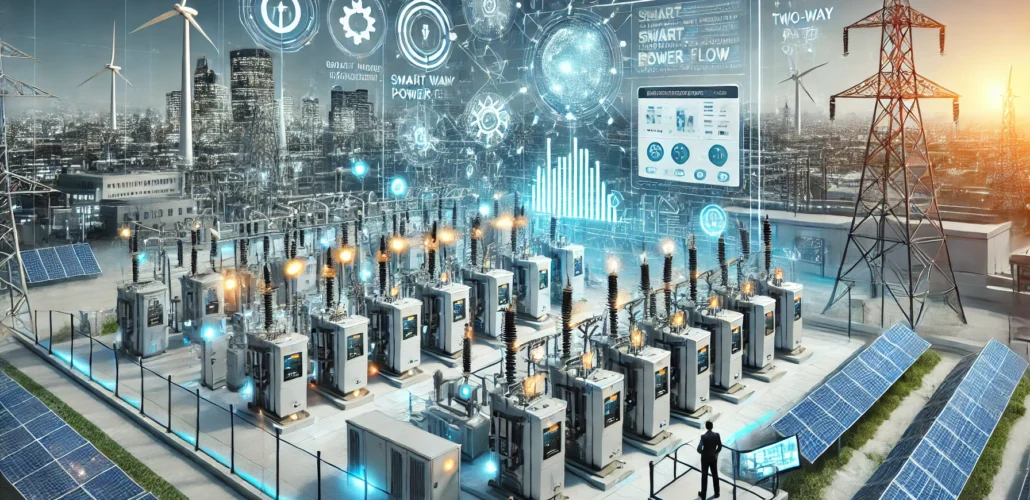Revolutionising HVDC Grids with Multi-Terminal Hubs
The first multiterminal hubs to be built in northern Germany will consist of a converter and a substation in addition to DC switchgear.

Image for illustration purposes.
In a groundbreaking move, German Transmission System Operators (TSOs) are collaborating to revolutionise the High Voltage Direct Current (HVDC) grid with the development of multi-terminal hubs.
The Need for HVDC Multi-Terminal Hubs
Traditional HVDC systems typically involve point-to-point connections, which can be limiting when integrating multiple renewable energy sources. Multi-terminal HVDC hubs, however, allow for a more flexible and dynamic network. These hubs can connect several HVDC lines, enabling the efficient transfer of electricity between multiple points. This is particularly beneficial for balancing supply and demand across different regions and integrating offshore wind farms and other renewable energy sources.
Key Players and Their Roles
Several industry giants and German TSOs are at the forefront of this initiative. Companies like Siemens Energy, Hitachi Energy, and ABB are contributing their expertise in HVDC technology. These collaborations are crucial for developing the advanced components and systems required for multi-terminal HVDC hubs.
Technological Innovations
One of the critical innovations in this project is the development of advanced direct current (DC) circuit breakers. These devices are essential for managing the flow of electricity in multi-terminal HVDC systems. They can quickly isolate faults, ensuring the stability and reliability of the grid. Additionally, the use of modular multilevel converters (MMC) enhances the efficiency and flexibility of power conversion, making it easier to integrate various renewable energy sources.
Benefits of Multi-Terminal HVDC Hubs
- Enhanced Grid Stability: Multi-terminal HVDC hubs provide greater control over power flows, helping to maintain grid stability even with the variable output of renewable energy sources.
- Increased Efficiency: By connecting multiple points, these hubs reduce transmission losses and improve the overall efficiency of the power system.
- Flexibility: The ability to connect and disconnect different HVDC lines as needed allows for more flexible grid management and better integration of renewable energy.
- Scalability: Multi-terminal HVDC systems can be expanded more easily than traditional point-to-point systems, accommodating future increases in power generation and demand.
Challenges and Solutions
While the benefits are significant, there are also challenges. The complexity of multi-terminal HVDC systems requires advanced control strategies and robust communication networks. Additionally, the high cost of DC circuit breakers and other components can be a barrier. However, ongoing research and development are addressing these issues, making multi-terminal HVDC hubs a viable solution for the future.
Future Prospects
The successful implementation of multi-terminal HVDC hubs in Germany could serve as a model for other countries looking to enhance their power grids. As renewable energy sources continue to grow, the need for efficient and reliable transmission systems becomes increasingly important. Multi-terminal HVDC hubs represent a significant step forward in achieving a sustainable and resilient power grid.
Source: Power Magazine
#ABB#circuit breaker#DC#electrical engineering#energy integration#Germany#grid efficiency#grid flexibility#grid stability#Hitachi#Hitachi Energy#HVDC#multi-terminal#multilevel converter#offshore windi#power systems#renewable energy#sustainable energy#system innovation#TSOS#wind integration



